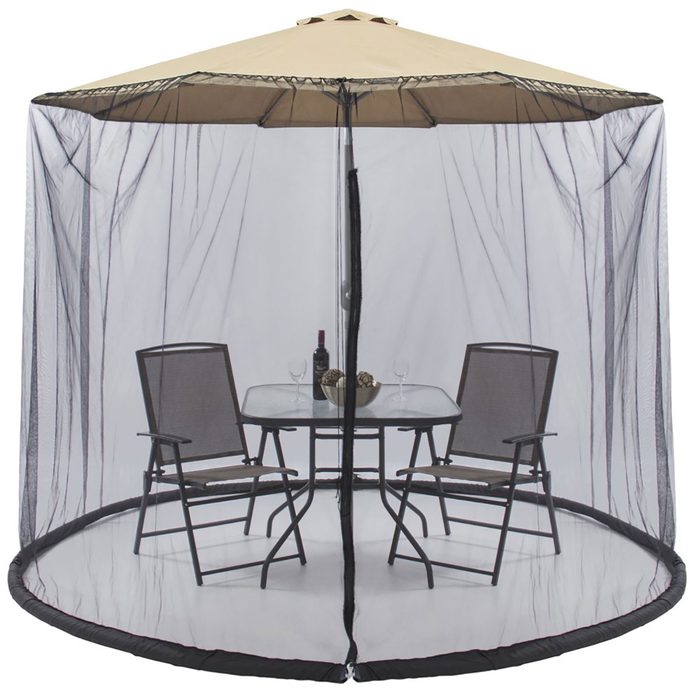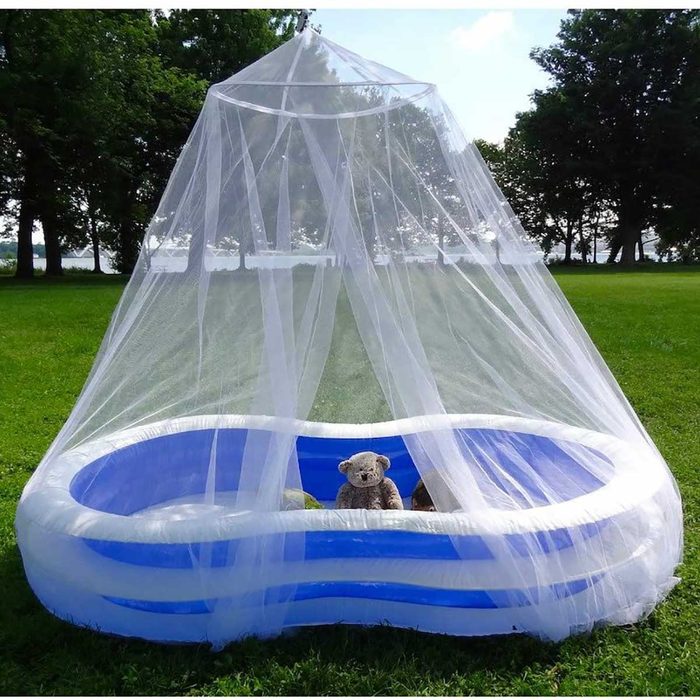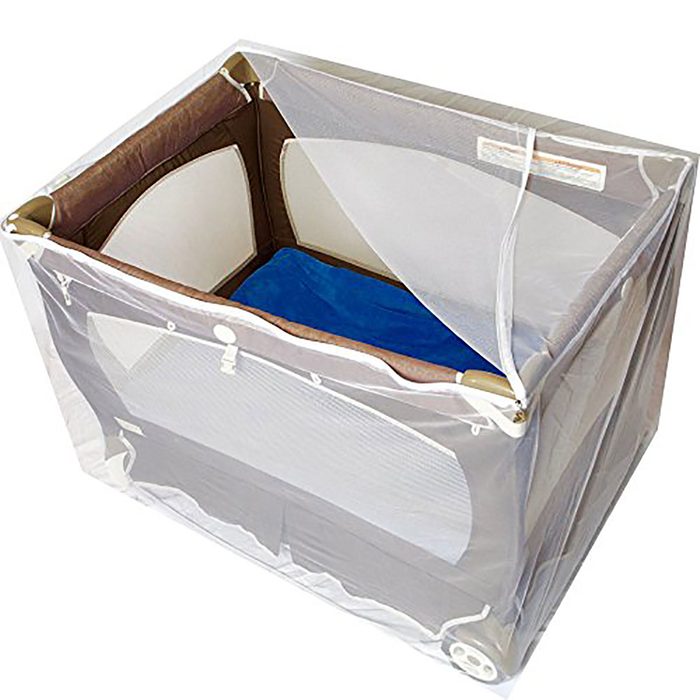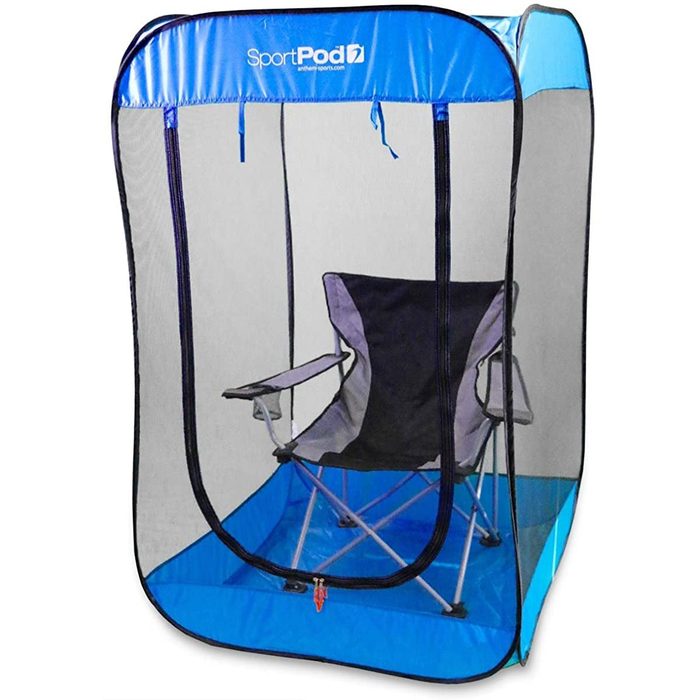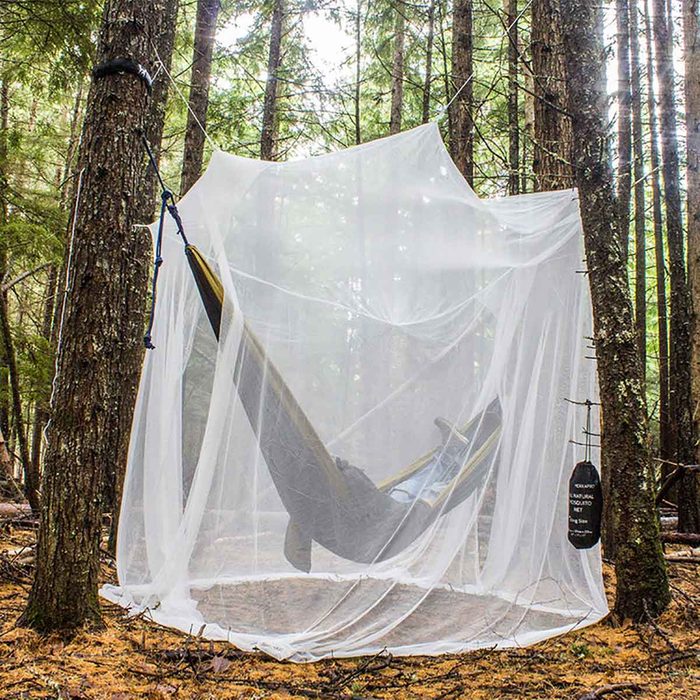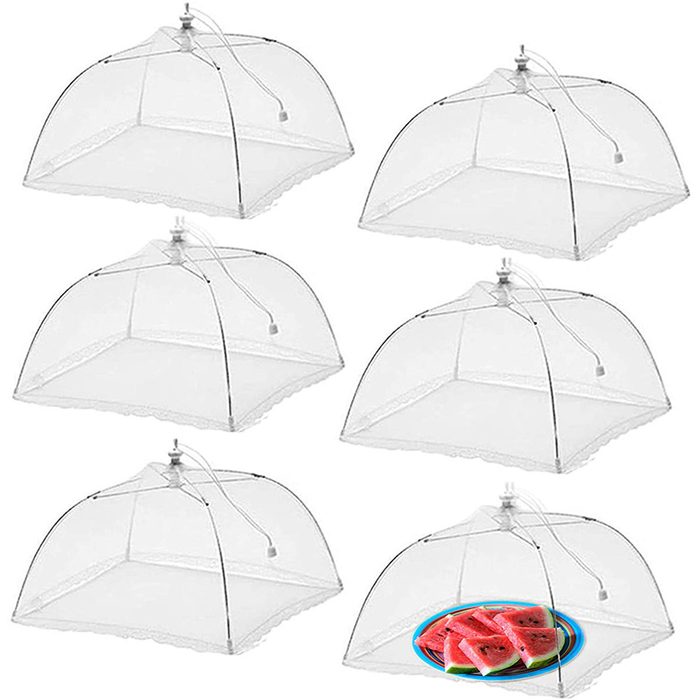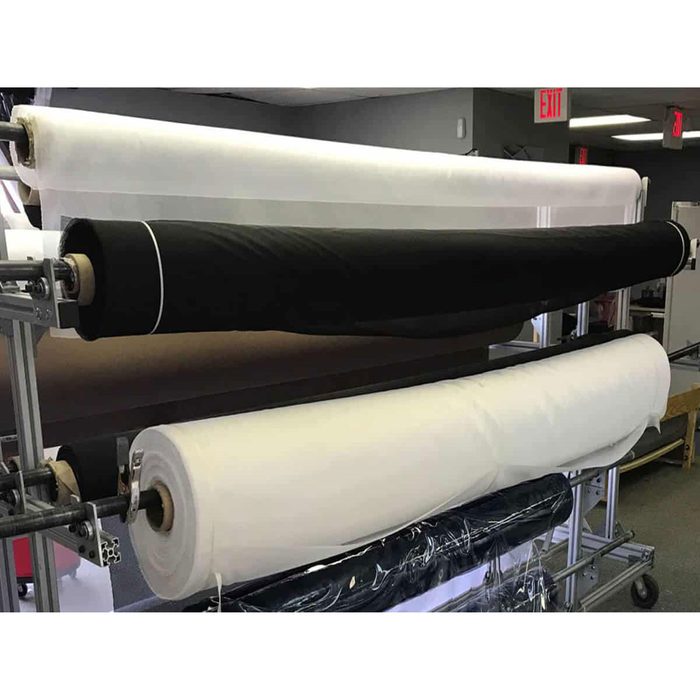There are lots of reasons to buy insect netting in bulk. You can lay large swaths of netting over plants for pest protection or sew a canopy to hang above your bed at night. You can also make a temporary car window screen affixed with duct tape. Mosquito Curtains offers a range of weights and mesh sizes to purchase by the linear foot. For huge DIY projects, you can order an entire roll (144 feet).
What to Consider When Buying Insect Nets
A good quality insect net can help you enjoy bug-free summer days without the threat of bites or bugs landing in your food. Insect nets are easy to use and a fairly straightforward product to buy, but if you’re looking to find one that will perfectly meet your needs and solve your insect issues, keep these things in mind before you purchase one.
- Size: Insect nets come in a wide range of sizes. Some are small enough to cover a plate of food, while others are big enough to enclose an entire patio. Think about what size space you want to be protected in, and read the product description for the measurements to get an accurate fit.
- Material: Most insect nets are made from very lightweight and durable polyester. They can also be made from nylon, cotton, wire mesh or tulle. The material you choose will depend on durability, intended use, environmental factors and personal preference.
- Safety: Since insect nets are typically used outdoors, be hyperaware of any open flames near them. Many are treated with flame-retardant chemicals, but you should still be cautious about grills, campfires or citronella candles.
Why You Should Trust Us
Toni DeBella has been published in outlets including Family Handyman, The Telegraph, Fodor’s, Italy Magazine, DK Eyewitness Travel Guides, and Orvieto or Bust. In her writing career, she has also focused her efforts and developed expertise in home improvement and DIY, writing product guides and hands-on reviews about everything from pest control to pool cabanas, painting and container gardening. Pair that with her decade-long career in the home improvement business; you can see how her expertise translates perfectly to insect nets and many other home and DIY categories.
How We Found the Best Insect Nets
When selecting the best insect nets for your deck and patio, we began by researching a wide range of options available on the market, considering factors such as durability, size, ease of use and price point. To narrow down our choices, we analyzed customer reviews to understand the real-world performance and durability of each insect net. Finally, we selected insect nets that offered a balance of quality, functionality and value, ensuring that there was an option suitable for every person or situation looking to enjoy the outdoors during buggy months.
FAQ
What color insect net is best?
The material of the netting is going to be more important than the color when it comes to keeping insects away. However, certain colors can make you more comfortable when inside. Darker colors will be easier to see, but they will attract more heat if you’re in a sunny area, so it could get warm inside. Ultimately, the color just comes down to your personal preference.
Is a smaller mesh better for insect protection?
Yes, the smaller the mesh size or pattern, the better protection the net will serve against insects. It will prevent smaller insects from passing through. Also, remember that a smaller mesh size may reduce airflow under the net and visibility.
Does insect netting work?
They work wonderfully, so long as they are properly sealed. These nets are designed so that bugs can’t wiggle their way through the mesh, but fresh air can still flow in and out. However, this depends on their edges being secure and sealed. If there’s a gap where bugs can get in, you bet they’ll find their way inside. That also means bugs can get in and out whenever you open the netting up to travel in or out yourself. It’s an unfortunate factor that can’t be controlled, but it’s good to know nonetheless.
What material is used for insect nets?
Most insect nets are made from polyester, polyethylene, or polypropylene, which are all synthetics. These materials can be effectively woven into very fine meshes and are durable and tough.





















